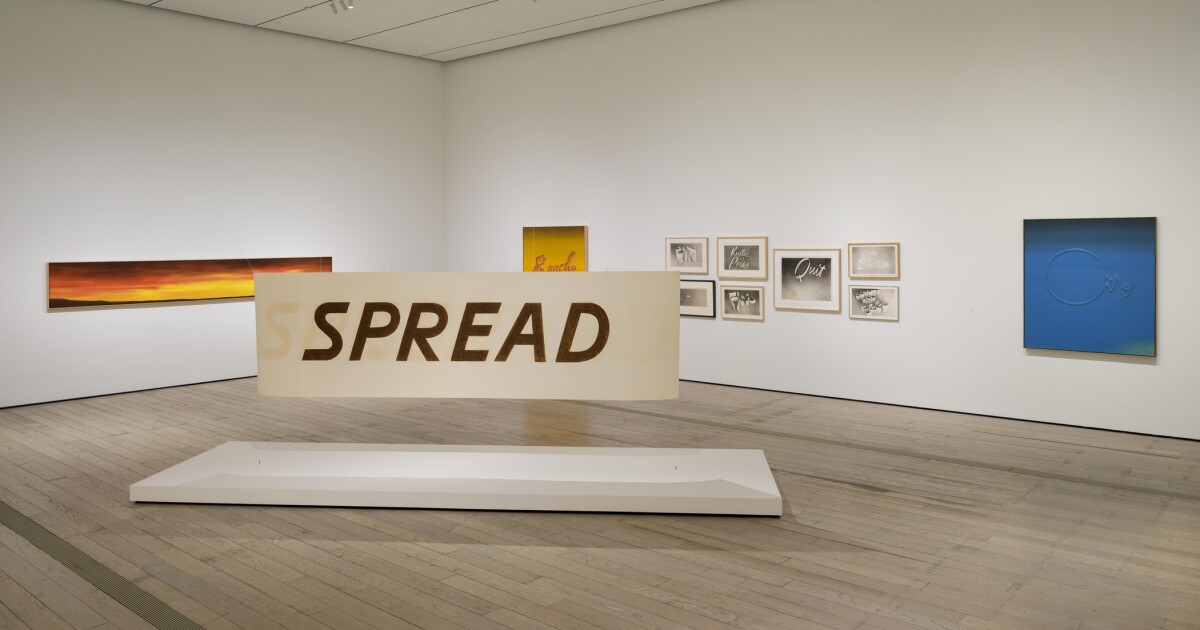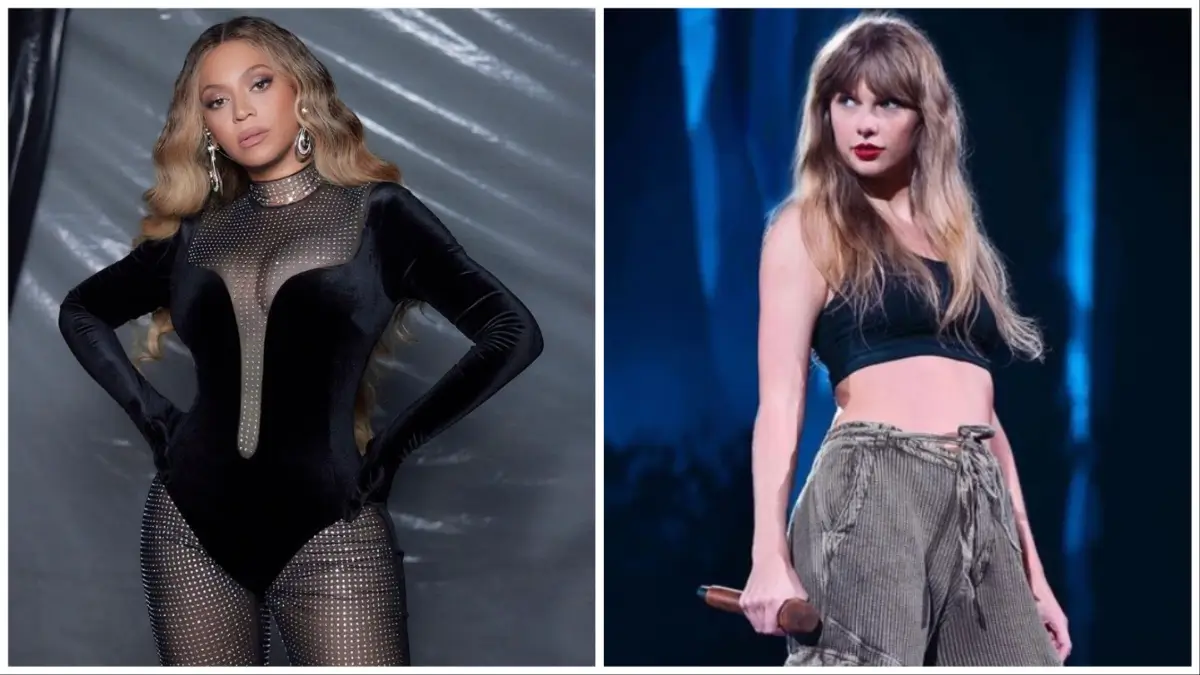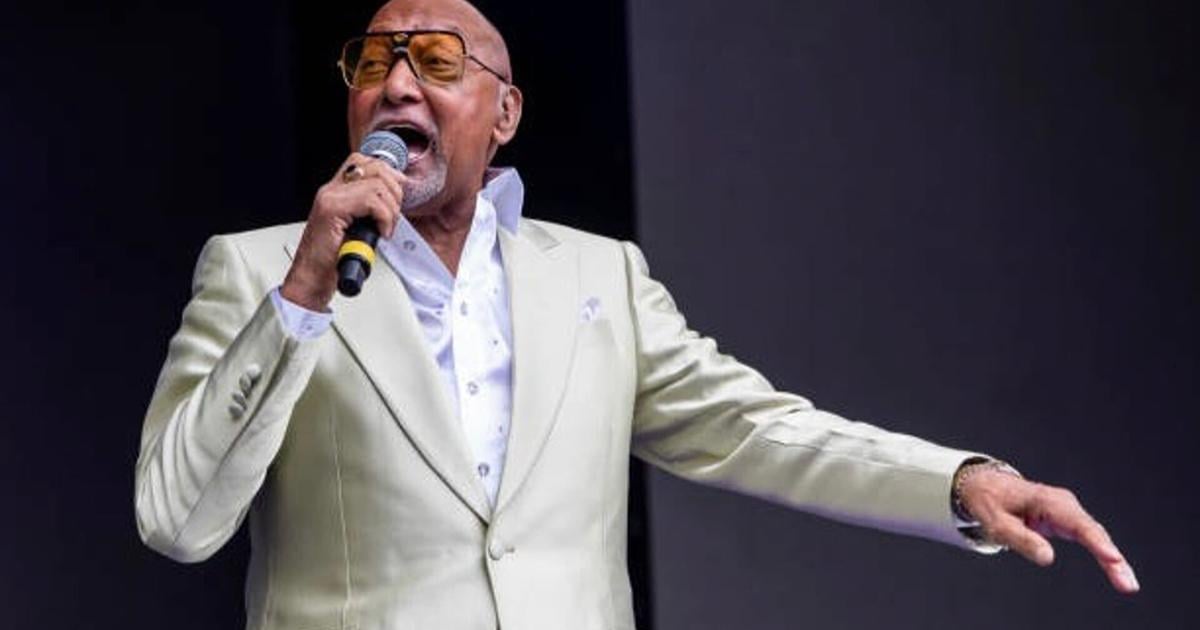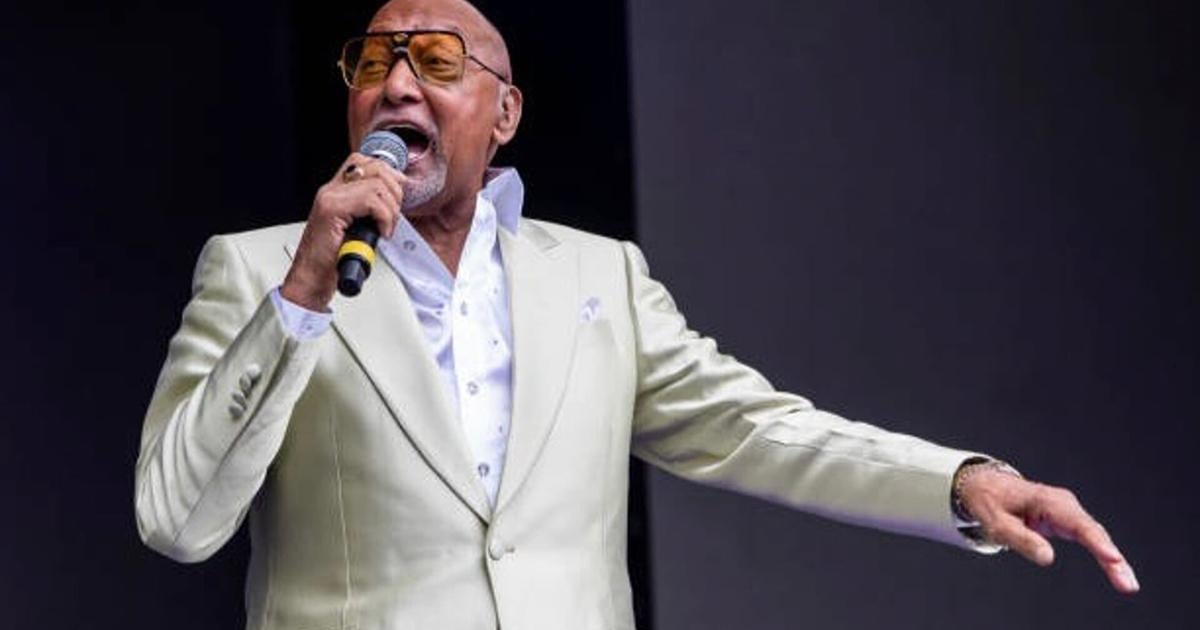The legendary artist Ed Ruscha still has the aura of the coolest guy in the room. The press preview for the Los Angeles County Museum of Art’s mammoth new retrospective ED RUSCHA/NOW THEN (now on view through Oct. 6) was packed with typically jaded journalists who looked — for once — actually excited to be viewing the 250+ works that span his seven-decade career.
When he emerged, still handsome, lean, and laconic at 86, for a conversation with LACMA director Michael Govan, the press had the anticipatory reverence of a tourist spotting a movie star for the first time.
To many people, Ed Ruscha, the pioneer of West Coast pop art who still works most days at his studio in Culver City, has created art that IS Los Angeles — deadpan, sardonic, yet somehow poignant, with its stark, distilled word play and elevation of banal Americana into high art.
And just like many an Angeleno, Ruscha’s story started somewhere else. He was born Edward Joseph Ruscha IV in Omaha, Nebraska. His father worked as an auditor, while his mother encouraged her son’s artistic ambitions. Initially slated for a life in advertising or commercial work, in 1956 he decided to head West to study at the Chouinard Art Institute (now CalArts) by way of the iconic slice of midcentury Americana known as Route 66.
“At that time,” he once said, “the East Coast was starched clothing and heating oil, while the West Coast was flexing biceps and health. This made the choice relatively easy. Didn’t all Oakies with mattresses on their cars go West, anyway?”
Los Angeles was perfect for an artist like Ruscha. “Los Angeles was big, clean, underpopulated and comparatively unscrutinized then,” author James Ellroy writes in Ed Ruscha: Fifty Years of Painting. “It was fresh bait for artists susceptible to newness and eager to experiment with form.”
It also had a sort of ever-changing glamour and modernism that interested and inspired the observant Ruscha.
“I seemed to be drawn by the most stereotyped concepts of Los Angeles, such as cars, suntans, palm trees, swimming pools, strips of celluloid with perforations; even the word ‘sunset’ had glamour,” he told Alexandra Schwartz, author of Ed Ruscha’s Los Angeles. “West was hot. East was cold. This was new life. … This city simply had a good story for itself, that’s all.”

Ed Ruscha, “Hollywood,” 1968, Los Angeles County Museum of Art, Museum Acquisition Fund.
photo © Museum Associates/LACMA
)
After graduating from Chouinard in 1960, Ruscha’s big break came when he had his first solo show at the revolutionary Ferus Gallery in 1963. Founded by Walter and Shirley Hopps and for years under the direction of art dealer Irving Blum, the gallery on La Cienega Boulevard. would showcase a fraternity of emerging, hip West Coast artists including Robert Irwin, Walter Berman, and Larry Bell. They also showed Andy Warhol’s famed 32 Campbell’s Soup Cans.
Actor Dennis Hopper was the first person to buy a big-ticket work from Ruscha, a painting of a Standard Gas Station. That same year, LACMA was the first museum to purchase a Ruscha, when they bought Actual Size — an iconic painting featuring what looks like a flying can of SPAM. The museum now has over 500 works by Ruscha.
But in typically cheeky Ruscha fashion, he would poke fun at the very L.A. institutions who championed him. In 1965, the controversial new LACMA campus opened on Wilshire Boulevard (it was torn down in 2020). So what a thrill to hear him tell Govan, at LACMA itself, why he decided to paint his famous piece Los Angeles County Museum of Art on Fire, which he finished in 1968 (on loan from the Hirshhorn Museum in Washington, D.C., it is a standout of the current exhibit).
It all started when he took a 45-minute helicopter ride above the city. “I took some Polaroid pictures of the museum from the air, and it started from there,” he told Govan. “I forget at what point I decided that it was going to be on fire… Maybe it was that time when I thought the County Museum was an authority figure …but my intention [was that] the left-hand side of the painting and the right-hand side of the painting were at odds with one another, and the left-hand side was the furious fire going on, and the right-hand side would almost put you to sleep.”

Ed Ruscha, “Los Angeles County Museum of Art on Fire,” 1965-1968, Hirshhorn Museum and Sculpture Garden, Washington, D.C.; gift of Joseph Helman, 1972.
A master self-promoter, he even sent out telegram invitations to view it, noting to bring a fire extinguisher. “That was the Barnum and Bailey part of it,” Ruscha noted slyly.
He would similarly poke the establishment when the Library of Congress refused to accept a copy of his photography folio Twentysix Gasoline Stations by taking out an advertisement in the influential magazine Artforum highlighting the rejection. “I took that as a badge of honor,” he deadpanned.
Though early in his career Ruscha would downplay his association with Los Angeles (and still does with Hollywood per se), its geography and its façade inspired him. In his famous books like Some Los Angeles Apartments and Thirtyfour Parking Lots, he documented the landscape of an urban metropolis. “One book was kind of a lightning rod to the next,” he told Govan.
Then there is the 25-foot accordion book Every Building on the Sunset Strip (1966), created by Ruscha riding in his pickup truck in the early morning hours to photograph every building and empty lot of the famed road. He and his brother, Paul Ruscha, continue to document the Strip, and have photographed many other legendary L.A. roads including Hollywood Boulevard, Melrose Avenue, and the Pacific Coast Highway.
As Schwartz notes, these books came along as L.A. was gaining status both in the art world and in urban studies. “The moment when Ruscha began making his architectural books coincided with the birth of a spate of ‘Los Angeles Studies,’ that analyzed the history, structure and societal impact of the postwar, highway-based city,” she writes.
Through Hopper and other friends, Ruscha also became friendly with the “New Hollywood” of the late 1960s and 70s, and shared their cynical attitude towards the business that makes L.A. tick. Paintings of the 20th Century Fox logo can be seen as commentary on the death of the studio system, word-based paintings like Another Hollywood Dream Bubble Popped and Hollywood is a Verb speak for themselves.

Ed Ruscha, “Large Trademark with Eight Spotlights,” 1962, Whitney Museum of American Art
His ominous paintings of the Hollywood Sign, in smoggy skies or from behind, also express his disdain for the dream factory.
“The idea of Hollywood has lots of meanings and one — to me — is this image of something fake up here being held up with sticks,” he once said, per Schwartz, in his typically elusive fashion. “That to me had more meaning with the term ‘Hollywood’ than the other usual associations … I don’t even think it should stay; it doesn’t even mean ‘landmark’ to me. It might as well fall down. That’s more Hollywood — to have it fall down or be removed. But, in the end, it’s more Hollywood to put it back up.”
Despite his studied indifference, he also adopted a persona worthy of a ‘60s’ counterculture icon, dating model Lauren Hutton, actor Samantha Eggar, Diane Keaton and the author and it-girl Eve Babitz, the queen of Los Angeles cool.
“We went to Musso and Frank’s. That was Eve’s favorite spot and mine too. And we would go to openings, go to Barney’s Beanery, places that were hot at the time,” he told the Los Angeles Times.
Throughout the decades, as L.A. has rapidly changed and gone from a looked-down-upon artistic backwater to an art world powerhouse, Ruscha has continued to embrace, chronicle and comment on its evolution. “I like the idea that things are changing,” he once told The Wall Street Journal. “That’s not always negative.”
And maybe that’s why Ruscha is so beloved by Angelenos — we often hate L.A., we complain, but it has an elusive pull and lore that we just can’t help but love. But Ruscha’s reach has expanded far beyond the borders of L.A. County — he has become a chronicler of Americana, who the New Yorker calls the bard of a “calmly collapsing America,” and the New York Times calls the “deadpan laureate of American Art.”

Ed Ruscha, “Our Flag,” 2017, Jimmy Iovine Revocable Trust, Collection Jimmy Iovine
Nonpolitical for most of his career, Ruscha has increasingly produced art that can be seen as an attack on fascist thought and misinformation. Indeed, the show charts his career from now to the present day, and one sees the evolution of both a man, a city, and a nation. “Looking in the rearview mirror, it’s an avalanche of things from my past that are kind of jarring in a way,” he told Govan. “But I guess they add up … And I’m not over yet.”
What questions do you have about Southern California?






